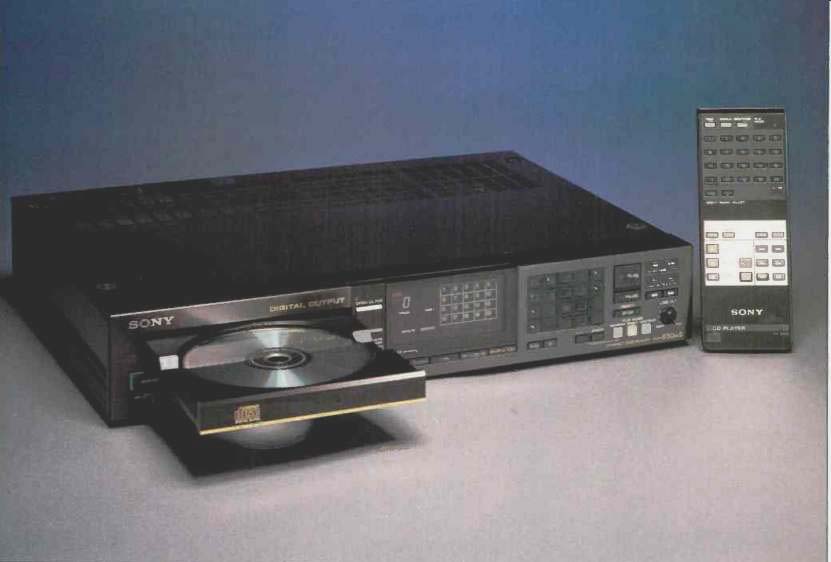
Manufacturer's Specifications:
Frequency Response: 2 Hz to 20 kHz, ±0.3 dB.
Harmonic Distortion: 0.0025% at 1 kHz.
Dynamic Range: Greater than 96 dB.
Channel Separation: Greater than 95 dB.
Number of Programmable Selections: 20.
Output Level: 2.0 V, fixed and variable.
Phone Output Level: 28 mW into 32 ohms.
Power Consumption: 16 watts.
Dimensions: 16-15/16 in. W x 3 1/8 in. H x 13-3/16 in. D (43 cm x 8 cm x 33.5 cm).
Weight: 19 lbs., 6 oz. (8.8 kg).
Price: $1,300.
Company Address: Sony Dr., Park Ridge, N.J. 07656, USA.
Digital Compact Disc technology is moving along at a rapid clip. Sony, one of the "founding fathers" of CD, measures its progress by, among other things, the generation number of its players. The CDP-650ESD is Sony's third generation, top-of-the-line player; as such, it incorporates a host of technical advances, both internally and externally, which are worth mentioning at the outset.
Most important, perhaps, is the fact that Sony has, at long last, swung over to digital filtering and oversampling-a technique first espoused by Philips, their partner in the development of the CD system. Moreover, Sony's use of oversampling and digital filtering goes a step further than anyone else's in that it employs a single master clock to synchronize all decoding and digital-to-analog conversion operations. The very significant benefits of this technology became apparent to me when I tested the unit and listened to it, but more about that later.
Much of the advanced circuit integration developed by Sony for their miniaturized car CD players and their acclaimed Model D-5 portable CD player is also found in the CDP-650ESD, including the incredibly dense VLSI chip that replaces the function of three ICs used in earlier-generation players. The tracking, servo and laser pickup mechanism is the same lightweight, lower-mass assembly used in the aforementioned D-5 and car players; the motor which guides the laser pickup and keeps it on track is a brand-new, linear unit which replaces the bulky, worm-gear motor used on earlier models. This new motor enables the player to access any point on a CD in 1 S or less-even track 99 of a 99-track disc, if any such were ever produced (besides test discs)! Random-access programmability has been increased to 20 selections, including programmed access to index points on those discs which are index-configured. (More and more such discs are appearing lately.) In addition to specific, programmed play, Sony has incorporated a new playing mode which they call "Shuffle Play." In this mode, the selected tracks or index segments are played back in random order. I wondered what possible use this might be to consumers; when I inquired, I was told that it might be handy to have when playing a multi-track disc for background music or for dancing. The disc could be repeated over and over, but the order of selections would be different each time so that listeners wouldn't become bored. I rather think that this function won't be used by too many people, but if nothing else, it does display the power of the microprocessor used in this machine. Another novel convenience is the "Auto Delay" function, which allows you to delay the playback of each chosen selection by 2 S. Repeat play and AMS (Automatic Music Sensor, for rapid selection of a given track) are pretty much the same as they were on earlier Sony players.
Control Layout
The front panel of the CDP-650ESD has a completely new look, especially in the display area. The disc-compartment drawer remains basically as it was on earlier machines. The compartment drawer is opened by touching an "Open/ Close" key just to its right, and is closed by touching the front of the drawer itself, by touching the "Open/Close" key or by initiating "Play" of a disc. Numbered keys from 0 through 20, plus a key labeled "+ 10," are located near the panel's center and are used to call up desired tracks either for immediate play or for programming. With the aid of the "+ 10" key, it becomes easy to call up or program track numbers higher than 20; for example, to call up track 44 (assuming there were that many tracks on a disc) you would punch the "+ 10" button four times and then touch the "4" button. The "Play, ' "Pause," "AMS" (automatic track advance and track retard), and play-mode keys ("Continue," "Single," and "Program") are to the right of the numeric keyboard, while "Check" and "Clear" keys (for verifying programmed instructions or clearing them from memory) are just below the numeric keys. The "Stop" key and a pair of manual-search keys are near the lower right corner of the panel; the latter allow fast search in either direction while listening to a disc.
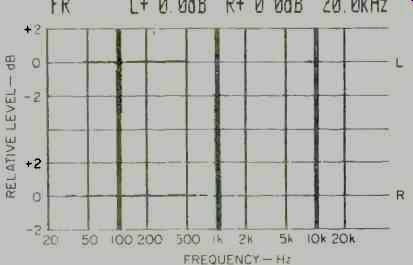
Fig. 1--Frequency response, left (top) and right channels.

Fig. 2--THD vs. frequency at three signal levels.
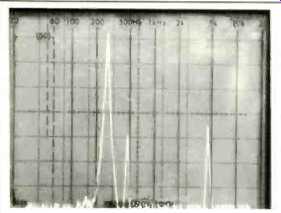
Fig. 3--Spectrum analysis done on early CD player, showing desired tone
(tall spike) and spurious beat tones.
At the lower left corner are the switches to turn the player on and off, either manually or by an optional external timer.
Five more buttons are beneath the display: "Repeat" (which repeats a selection program or the passage between two user-selected points), "A-B" (which sets those points in memory), "Time" (to select elapsed- or remaining-time display), "Auto Delay," and "Shuffle Play." At the lower right corner are an output-level control (which varies both headphone output level and the level at the rear-panel variable output jacks) and a stereo phone jack.
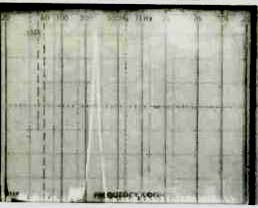
Fig. 4--Same test as in Fig. 3, done on the Sony CDP-650ESD. Note absence
of unwanted beat frequencies above the residual noise floor.
The display area on the front panel provides a variety of useful data concerning the status of the player and the disc being played. A "Disc" indicator lights up when a disc has been inserted properly. When a disc is first inserted, a "Track" indicator shows the total number of tracks contained on the disc for a few seconds, then displays the number of the track actually being played. A time counter displays the total amount of playing time on a disc when the disc is first inserted, after which it reverts to displaying the elapsed time of the track being played or the total time remaining on the disc. A "PGM" (ProGraM) indicator illuminates when the player is in the standby mode for programming. An "Index" indicator shows the index number of the selection being played (or, during the "check" sequence, of index numbers programmed for future play). Lights on a 1 to 20 numeric grid show how many selections you've programmed. If you program more than 20, the word "Over" lights up, along with the grid.
The rear panel of the CDP-650ESD is equipped with fixed and variable-level output jacks. There is also a multiple-pin accessory connector which, the owner's manual cryptically tells us, is to be used "to connect optional equipment which will be available in the future." By this time, I suspect, many of us know that the "optional equipment" will be a black-box accessory which will allow access to the video graphics that will soon be available on Compact Discs. The addition of this accessory will allow such digitally generated graphics to be displayed on your TV screen while you listen to the audio content of the same CD. The rear panel also has a "Play Mode" initializing switch.
This switch sets the turn-on play mode, determining whether the CDP-650ESD will set itself for continuous, single-selection, or programmed play when first turned on. The rear panel switch would therefore be set to the mode you want most often, while the front-panel mode keys are used to change from that play mode. Finally, the rear panel houses a special digital-output jack-a first for any CD player, as far as I have been able to determine. At this jack, you can access the full digital code picked up from a CD by the laser pickup, before it is converted to an analog signal by the player's own D/A conversion circuitry. Aside from the obvious ability to dub CDs onto a digital recorder while the musical information is in the digital domain, this special output lets you connect an external digital converter component, such as Sony's DAS-702ES (see sidebar). The 41-button remote control duplicates virtually every control on the front panel, right down to the volume control.
Measurements
To begin with, let me state that the CDP-650ESD exhibited the flattest frequency response of any CD player I have yet tested. As you examine Fig. 1, a plot of frequency response for the left- and right-channel outputs, you are not going to see very much because the plot of output, for the most part, fell smack on the 0-dB line of the graph. Maximum deviation from absolutely flat response was never more than 0.1 dB, and, as you can see from the notations on the graph, at the highest test frequency (20 kHz), deviation from flat response was 0 dB. Harmonic distortion at mid-frequencies for a maximum recorded level signal measured under 0.003%. I have tested other players with such low distortion, but I have never run across a player that exhibited such a low distortion figure at high frequencies (0.01% at 20 kHz). Part of the explanation lies in the fact that Sony has swung over to a combination of oversampling and digital filtering-but that's not the whole answer, since many other manufacturers have employed these circuit techniques before. Another factor is the use of a single master clock (as opposed to several non-synchronized clocks) to synchronize the decoding operations to the 44.1-kHz sampling rate of Compact Discs.
Figure 2 shows how harmonic distortion varied with frequency for recorded levels of 0, -24, and -30 dB. Figures 3 and 4 are perhaps of even greater interest.
Figure 3 shows what happens when a test signal is recovered by an earlier generation CD player. The tall spike represents the desired output signal, while shorter, spurious components to the right represent undesired output resulting from nonlinearities in the system and from the use of multiple digital clocks in the decoding system. The same signal, reproduced by the Sony CDP-650ESD, was scanned by a spectrum analyzer in the same way, and the output over a wide spectrum of frequencies is shown in Fig. 4. All that you can see now is the desired output at the left and the random, residual noise floor. There are no unwanted "beat" frequencies at any other point in the display! Unweighted signal-to-noise ratio measured a very high 97.0 dB, increasing to 102 dB when an A-weighting network was used (see Figs. 5A and 5B). SMPTE IM measured only 0.002% at maximum recorded level and 0.015% at-20 dB recorded level. IHF IM (twin-tone) measured only 0.0021% at 0-dB level and 0.0021% at-10 dB level. Stereo separation, plotted as a function of frequency in Fig. 6, ranged from 82 dB at mid-frequencies to around 76 dB at high frequencies.

Fig. 5--S/N analysis, unweighted (A) and A-weighted (B).
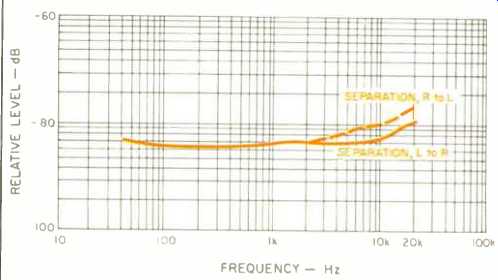
Fig. 6--Separation vs. frequency.

Fig. 7--Square-wave reproduction, 1 kHz.
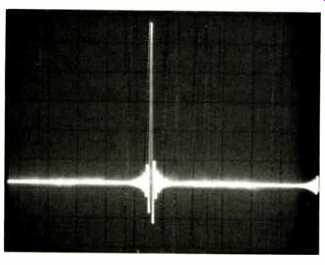
Fig. 8--Single-pulse test.
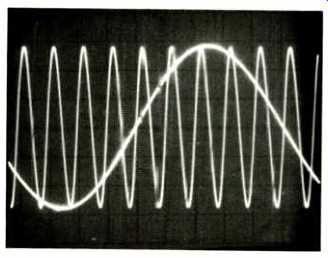
Fig. 9--Two-tone phase test signal (200 Hz and 2 kHz).
This player's reproduction of a 1-kHz square wave is shown in Fig. 7. Notice how much closer this waveform is to a true square wave than were the waveforms other players reproduced from this signal in earlier tests. It's not just that the "ringing" on the leading edge of the square wave, associated with the use of steep, multi-pole analog filters, is absent. There's also much less of the low-level ripple normally seen on the horizontal portions of the square wave with players using digital filtering and oversampling. This suggests very minimal phase shift for the square wave's higher order (high-frequency) components. The virtual absence of any phase shift indicated by the comparison of 200-Hz and 2-kHz signals on opposite channels in Fig. 9 confirms this. In Fig. 9, both the low-frequency (200-Hz) and higher frequency (2-kHz) sine waves cross the zero axis in the same direction, at precisely the same time.
Use and Listening Tests
This feature-laden player has just about every convenience I would want in a CD player. Furthermore, the features are easy to use and are all augmented by the multifunction, wireless remote-control unit which is supplied with the CDP-650ESD. About the only possible feature that Sony has left out is access to a given point on a disc according to time (minutes and seconds into a given track). Sony says that their own opinion surveys of CD-player owners indicated that this feature is rarely used (and seldom requested), while accessing by index (which this player does offer) is increasingly desired.
When I first read that the CDP-650ESD could access any point on a disc within 1 S or less, I presumed that this was a bit of promotional exaggeration, but I felt that no one would really quibble if, in fact, the laser pickup took 2 or even 3 S to reach its destination. Much to my amazement, the claim is no idle exaggeration. I have a special test disc with 99 tracks on it designed to check accuracy of access and other qualities relating to a player's tracking ability. This unit found track 98 in no more than 1 S! I realize that this feat, in and of itself, doesn't really mean that much. But to my mind, it tells me a great deal about the lightweight laser pickup and about the accuracy, speed, and reliability of the new linear motor used in this player. These assemblies and this kind of pickup travel suggest that there will not be much mistracking with this machine: All of its built-in, error-correction circuitry will be available for correcting or concealing errors in discs, with none of it "spent" to compensate for disc-reading errors caused by the player's poor tracking.
Sound quality of the CDP-650ESD is absolutely magnificent. It is far better than the sound quality of Sony's first generation players, and, with really good software in place, it is also distinctly better sounding than their excellent second-generation players-about which I had nothing but praise last year. I realize that I have used superlatives to describe earlier CD players from Sony, as well as from other manufacturers. It's important to point out that I am talking about relatively minor sonic differences here. Of course, the first players offered great sound-given decent CDs to use with them-and I still maintain that the sound produced by those first- and second-generation players, when playing properly produced CDs, was better, by far, than anything I had heard from LPs or analog tapes. What I am saying now is that the slight problems that I (and others) attributed to some of those early players seem to have been eliminated in this third-generation unit from Sony. I can't tell you if it's their new VLSI chip that's doing the trick or if it's the single master clock, the lighter laser pickup, or the new linear motor. Possibly it's all these things added together, plus the experience gained by Sony's design engineers after nearly three years of intense activity in Compact Disc design. All I know is that the CDP-650ESD is a magnificent-sounding machine that, when heard playing well-made CDs, is likely to convert those few remaining diehards (yes, there are still a few) who aren't yet convinced that the Compact Disc is the best thing that's happened to audio and home sound reproduction in many a decade. Until I can be shown that a better sounding CD player exists, I'm going to consider this model my new standard of reference.
==========================
SONY'S DAS-702ES: GILDING THE DIGITAL LILY?
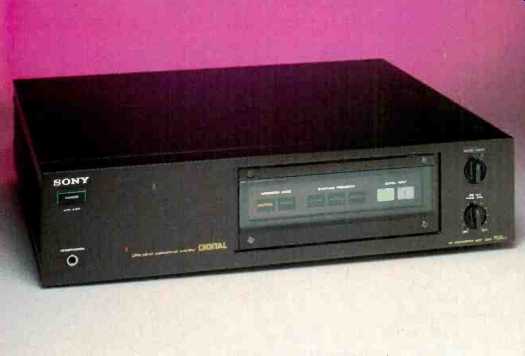
Along with the remarkable Sony CDP-650ESD Compact Disc player tested for the accompanying report, I also evaluated another new product from Sony, the DAS-702ES external D/A converter. In essence, this unit duplicates functions which must be incorporated into any CD player, the translation of the digital code extracted from a digital program source (such as a Compact Disc) into the closest possible replica of the original analog audio signal. In fact, it's only usable with signal sources having digital outputs, like the CDP-650ESD, but no other CD players that I know of so far. Thus, my first reaction to this additional component was to ask why anyone would want or need it, since full decoding is performed by the D/A circuitry already contained in every CD player (including the Sony CDP-650ESD, which is intended to serve as a companion piece for the DAS-702ES). The people at Sony suggested that this separate D/A decoder (or converter) is a state-of-the-art device which, if connected to the CDP650ESD, would yield sound superior even to that of the top-of-the-line CD player itself. Furthermore, I learned that the DAS-702ES offers greater digital-to-analog decoding flexibility and might well be needed in the future for certain other D/A decoding chores. For example, the digital input applied to this decoder need not be confined to a sampling rate of 44.1 kHz (the standard CD sampling frequency). The unit can also handle a sampling rate of 32 kHz (the standard sampling rate for digital-audio broadcasting in Europe and elsewhere) and the 48 kHz used in professional digital recording with equal ease.
I was curious to learn whether I would be able to measure or hear any difference between the sounds produced by the superb CDP650ESD operating on its own, and the sounds produced by hooking up that player (via its digital-output jack) to the DAS-702ES. To satisfy my curiosity, I repeated virtually every measurement that I had made on the CDP-650ESD alone, on the combination of the CD player plus the separate D/A unit. I resolved to do a blind listening test between the two setups as well, using my associate to set up the test in a random switching sequence and instructing him not to tell me when he was switching setups from one to the other. But I'm getting a bit ahead of myself.
On the DAS-702ES, the digital input jacks are paralleled by a pair of jacks identified as "Digital Outputs." These provide a convenient feed through to pass the undecoded digital program material to other devices which might require data in digital format (such as, for example, some future type of dedicated, digital tape-recording mechanism, or even the black box that will someday be used to generate the video graphics signals encoded in certain CDs). The only front-panel controls on the DAS-702ES are a power "On/Off" switch, a "Digital Input" switch (for selecting between the two sets of digital input signals which may be connected to the unit), a headphone jack for monitoring decoded output using stereo phones, and an output level control which regulates both headphone and variable line-output levels. The rear panel is equipped with the aforementioned pairs of digital input and output jacks, as well as pairs of fixed- and variable-level analog (decoded) output jacks.
Measurements
Many of the published specifications supplied for the DAS-702ES, though excellent in their own right, are actually somewhat poorer than the specs supplied by Sony for the CDP-650ESD operating by itself! For example, frequency response claimed for the separate decoder/converter, though extending from 5 Hz to 20 kHz, carries a tolerance of ±0.5 dB, as opposed to ±0.3 dB and a range of 2 Hz to 20 kHz for the player. Rated distortion for a 1-kHz signal at maximum recorded level (using a 44.1-kHz sampling rate) is listed as 0.004%, as opposed to 0.0025% for the CDP-650ESD. Dynamic range is marginally lower than that of the player alone, as well. And so on.
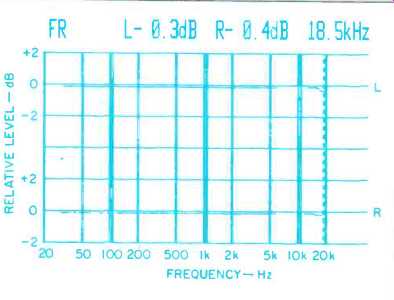
Fig. B1--Frequency response, left (top) and right channels, DAS-702ES D/A
converter.
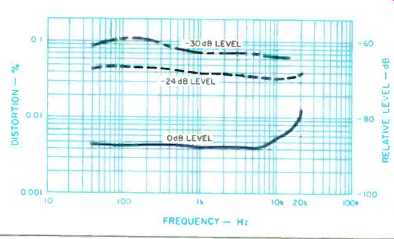
Fig. B2--THD vs. frequency at three signal levels, DAS-702ES.
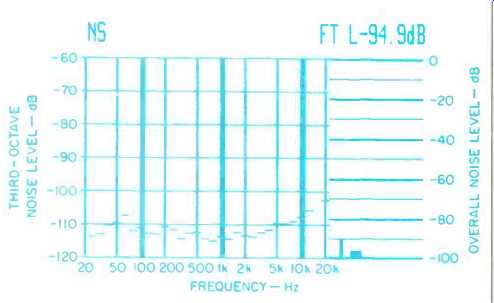
Fig. B3--S/N analysis, unweighted, DAS-702ES.
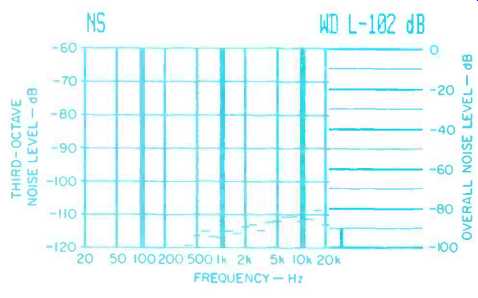
Fig. B4--S/N analysis, A-weighted, DAS-702ES.
Sony maintains that when you get down to the published specs that are involved in the digital domain, such minute differences are not what determine which unit will sound better. I certainly couldn't take issue with that, but I did want to make some measurement comparisons for my own satisfaction.
In Fig. B1 you will find a graph of frequency response plotted in the same way as Fig. 1 of the CDP650ESD report. Note that at 18.5 kHz there is already some attenuation of response. Figure B2, plotting distortion versus frequency, confirms what Sony admits: The separate D/A converter actually has slightly higher distortion at the three output levels I use to measure THD. Signal-to-noise ratio (unweighted, at least) was also a bit poorer on the DAS-702ES, 94.9 dB as against 97 dB for the CDP-650ESD (see Fig. B3). About the only parameter that measured better with this decoder than with the CDP-650ESD alone was separation, which, at mid frequencies, reached levels as high as 86 dB and remained higher than 82 dB at 20 kHz.
Using the same test disc, I photographed the usual square-wave, unit pulse and phase-shift signals as they appear on an oscilloscope in order to compare them with the photos obtained for the CDP-650ESD unit. Try as I might, I couldn't see the slightest bit of difference between Figs. B5, B6, and B7 and the corresponding photos taken for the CD player alone. Can you?
Listening Tests
Next, I was ready for the "moment of truth." Dutifully blindfolded, I asked my assistant to play some of my favorite CD tracks through both setups: The CDP-650ESD outputs feeding my reference system directly, and the player's digital output hooked up to the DAS-702ES, whose analog outputs were, in turn, hooked up to another pair of inputs on the reference amplification system. Happily, there was no problem adjusting for precisely equal outputs; when you deal with Compact Disc players, output levels are easily controlled and referenced to maximum recorded level. In this case, maximum recorded level provided an output of exactly 2.0 V rms for both setups.
After extensive listening, I have to tell you that I could not, at any time, distinguish between the sound of the two systems. They were both marvelous, of course, but until I have a need for a decoder that will handle digital information using a sampling rate of either 32 or 48 kHz, I myself see no reason to invest in this separate decoder, however more sophisticated its circuitry may be.
Dealing in this rather controversial area of esoterica (which is not my usual habitat, I might add), I don't want to let the matter stand there. I have a feeling that I am going to be deluged by a sack of mail from readers who will tell me that of course they can hear an obvious improvement when the separate (and costly) D/A converter box is used to do the digital-to-analog decoding. In order to forestall such a deluge of mail, I'm going to strongly urge Editor Eugene Pitts to allow other ears to conduct similar testing. If those ears disagree with my conclusion, I will not be upset or the least bit insulted. I will, in fact, conclude that perhaps Sony had very good reasons after all for introducing, as a consumer product, a component part of a Compact Disc player which sells (at $1,500) for more than the best complete player they now have available. I look forward eagerly to further tests by others, since without them I will remain rather puzzled by this D/A converter--feeling all the while that perhaps I'm missing the point somewhere.... L.F.
I have done some fairly extensive NB tests, with very close mid-band level adjustment, as well as many, many hours of open subjective listening to the CDP-650ESD in comparison with the first-generation player that had perhaps the most highly respected sonics. In the open listening, there was a smoother, less-shrill character to the Sony that sounded as if all frequencies from about 4 kHz and up had been shelved down about a quarter or a half dB. There was an edge to the sound of the other machine, as if a bit of interstation FM noise had been added, noise which was whistley, whiny, and scrapey in character. These differences tended to go away for me when I was doing the NB tests. However, three other
casual, non-audiophile listeners made the same sort of comments when I was independently demonstrating the unit's disc handling to them. They were not prompted to give any sort of comment on the sound; they volunteered the remarks. My conclusion is that I like to listen to the new Sony in preference to the old player, whether or not there is any hard data from a blind NB test backing up statements on its sonic superiority.
The sound of the CDP-650ESD when combined with the DAS-702ES was, however, a different story--probably because I had troubles with the converter right from the start. I sent the unit home, via UPS, since I do my most serious listening there.
The switch controlling the digital output arrived broken, because of its being located as the most vulnerable component during boxed carrying and because Sony uses the very worst sort of packaging-crushable, coffee-cup foam. I fixed the switch once, and Sony fixed it (very quickly, thank you) after two more trips. Neither fix would have been needed had that switch not been placed at the furthest possible point from the handle for the carry home and if not for that awful foam. Neither is worthy of a top-of-the-line product.
Anyway, I thought that the sound of the combined Sony’s was less good than the sound of the 650 alone, but still better than the first-generation player. I do not have sufficient switching facilities to be able to check this sort of a three-way comparison, and I think that my difficulties in getting the 702 working probably influenced my judgment about its character. I'd buy a 650, but in the absence of another use, I'd pass up the 702.
--E.P.
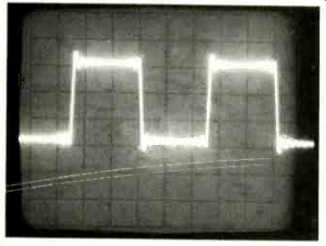
Fig. B5--Square-wave reproduction, 1 kHz, DAS-702ES.
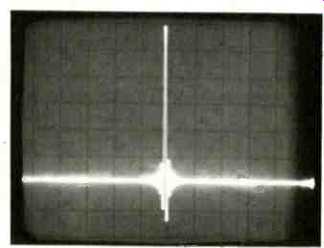
Fig. B6--Single-pulse test, DAS-702ES.
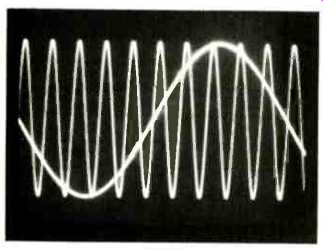
Fig. B7--Two-tone phase test signal (200 Hz and 2 kHz), DAS-702ES.
==========================
-Leonard Feldman
(Source: Audio magazine, July 1985, Leonard Feldman)
Also see: Sony CDP-707ESD Compact Disc Player (Apr. 1988)
Sony CDP-610ES CD Player (Nov. 1984)
Sony CDP-650ESD Compact Disc Player (July 1985)
= = = =